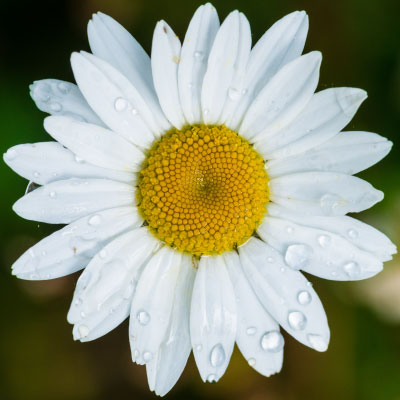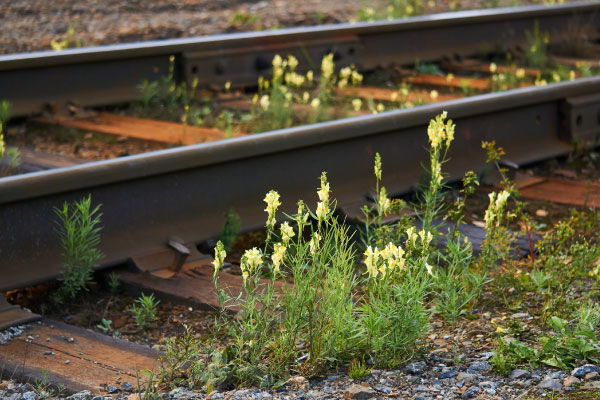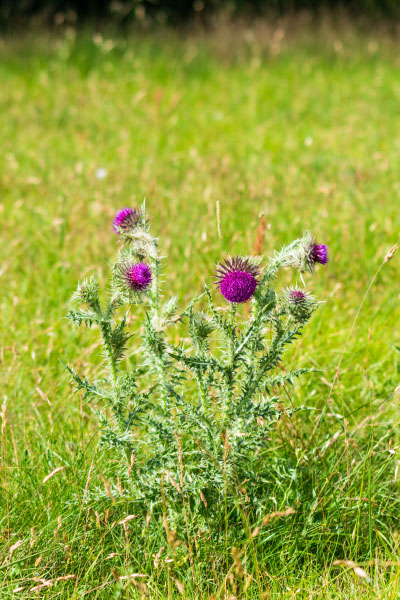 If you’re a hiker, you’re likely to come across some lovely wildflowers on one of your Eagle County hikes. You might find some delicate yellow and white toadflax or beautiful red-purple Musk Thistle or white Oxeye Daisy. They’re pretty, and they’re everywhere. But sadly, they’re really bad for our national forests and Wilderness areas.
If you’re a hiker, you’re likely to come across some lovely wildflowers on one of your Eagle County hikes. You might find some delicate yellow and white toadflax or beautiful red-purple Musk Thistle or white Oxeye Daisy. They’re pretty, and they’re everywhere. But sadly, they’re really bad for our national forests and Wilderness areas.
Those three plants, and some 30 others, are invasive noxious weeds. Noxious weeds are plants, usually beautiful ornamentals brought from Europe or Asia, that invade an ecosystem and quickly take over. Spreading with abandon, they begin to change the composition of host forests.
Take Musk Thistle, which was imported from Europe in the late 19th or early 20th century. This tall, spiny thistle is now a noxious weed in 43 states and found throughout Colorado. When it takes hold, it tends to take over. At the end of summer, Musk Thistles can be six feet tall with a dozen blossoms, and grow so close together it’s impossible to walk between them. These inedible invaders are a danger to native wildlife because they replace normal food sources, and also replace areas where wildlife might bed down or use as cover.
 Oxeye Daisy is another pretty invader that has escaped from gardens. In the wild it creates a monoculture and can fill an entire field. The plant flower changes the very soil around it, so native plants cannot grow there. And fauna suffers because they cannot eat it.
Oxeye Daisy is another pretty invader that has escaped from gardens. In the wild it creates a monoculture and can fill an entire field. The plant flower changes the very soil around it, so native plants cannot grow there. And fauna suffers because they cannot eat it.
Many of these plants are spread by their seeds. Noxious weeds produce thousands of seeds, which can rest dormant in the ground for decades before they spring into life. When the ground in a field is disturbed by hikers or animals, these seeds will take root and grow.
 As hikers we can to a lot to keep our precious lands free of these noxious weeds. Some things you can do:
As hikers we can to a lot to keep our precious lands free of these noxious weeds. Some things you can do:
- Stay out of weedy areas to keep from spreading them. If you do encounter weeds, clean your shoes and clothing before moving on – so you don’t carry weeds with you.
- Keep your dogs on leash (leashes are required anyway in the Eagles Nest Wilderness). Dogs dig and carry seeds in their fur and on their paws - actively planting weeds.
- Avoid areas with weeds, and be sure you don’t have seeds on your clothing. Camping disturbs the ground, so camp away from weedy areas.
Horses should never be allowed to eat anything but certified weed-free feed for several days before entering the wilderness. Otherwise, they will carry seeds in their stomach and produce fertilized seed bombs in our forests!
If you want to remove weeds, become informed. Some weeds spread by seeds (a single Musk Thistle can produce thousands of seeds), so when you pick them you must put them in a bag and in your garbage, so seeds don’t spread. Common Mullein, False Chamomile, and Musk Thistle are three you can treat like this. Other weeds spread by the roots – and you can’t pull those. It just makes them “angry” and they will spread even more. Oxeye Daisy, Canada Thistle, and Dalmatian Toadflax are examples of plants you should report instead of pull.
To learn more, Summit County, Eagle County, and the State of Colorado all have great websites. You can download wildflower identification apps that identify weeds. ESWA’s website has great information on weeds: https://www.eaglesummitwilderness.org/copy-of-weeds. Better yet, join ESWA’s Weed Pull on July 31 to work on a weed infestation with us!

Jim Alexander is the “WeedCzar” for ESWA, the Eagle Summit Wilderness Alliance, an all-volunteer nonprofit that helps the U.S. Forest Service protect and preserve the Wilderness Areas in Eagle and Summit Counties. He is a guest writer for Walking Mountains Science Center’s Curious Nature column.









